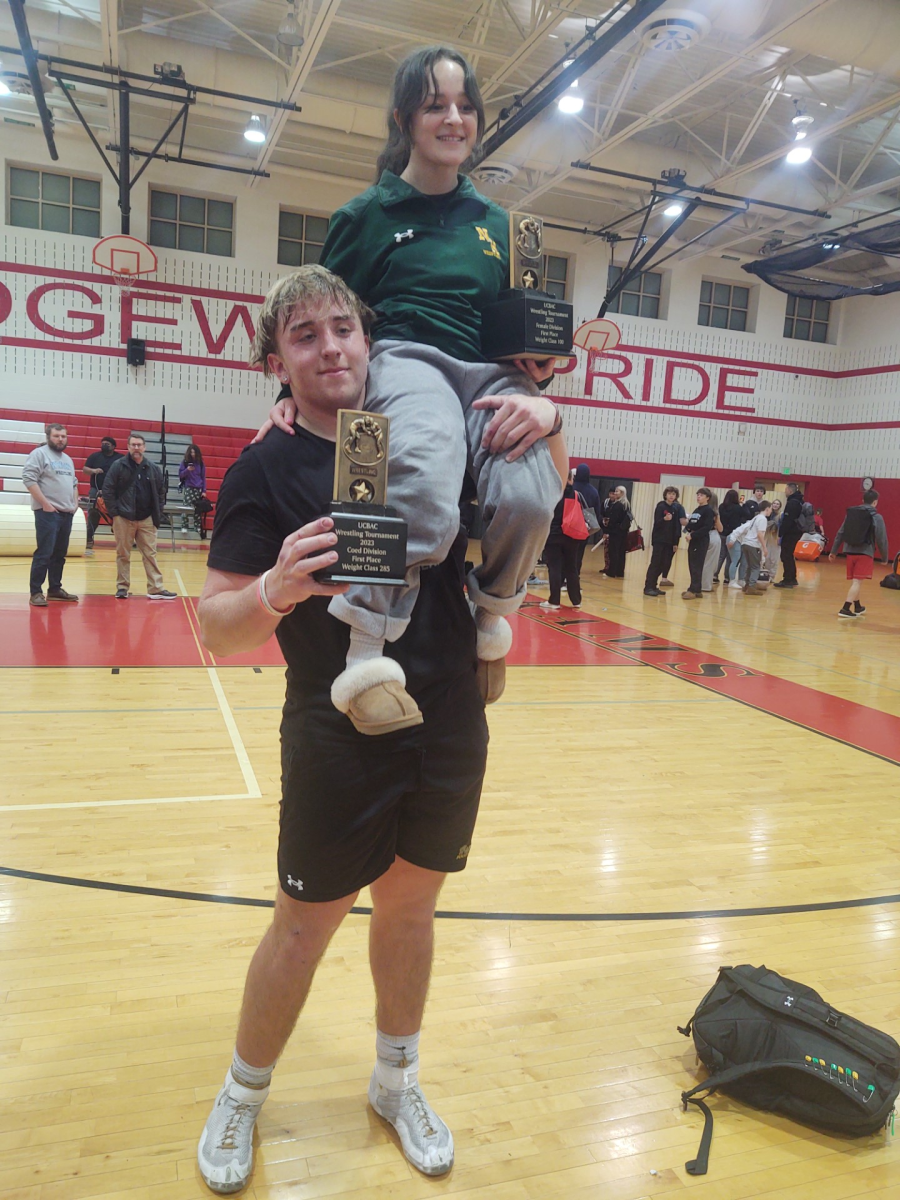Fantastic Mrs. Fox; Mrs. Dallam reins in the foxes
April 22, 2021
Joanna Dallam, english teacher, has grown up riding horses. Dallam’s father got her into riding horses at a very young age. Those horses led her to a hobby she’s then since kept up with for most of her life. Foxhunting.
The foxhunters don’t kill the fox, it is more like a chase. They collect roadkill to feed the foxes and do things to help care for them. Dallam says the foxes “give a lot of game and really try to ‘outfox’ you.”
The goal is to get the fox into its hole, and when they do the hounds that accompany them get excited. They then recast and go again. There are only three foxes in a hunt. Only ever putting a fox to rest when it is injured beyond repair.
She has been consistently foxhunting for about 15 years. She showed ponies her entire childhood. When she was about 13 or 14 years old, she was still showing ponies because of how small she was. This gave her a lot of experience with ponies due to handling them for about 10 years.
This allowed her to campaign ponies for other people, which Dallam says was a privilege. Those she campaigned and showed for offered her the opportunity to foxhunt with the ponies. She was able to hunt for free at clubs because of being young, eventually she got her own horse and joined the Elkridge Harford Hunt Club.
Dallam explains that a suitable horse must have the right mindset and temperament to be successful, along with being forward with a good stamina. They could ride for 15 miles without realizing. Horses should be quiet and have the ability to control themselves.
The horse she got wasn’t suitable for foxhunting. She explains that “the horse decides what you are able to do.” If the horse isn’t well behaved, has the right mindset or mindset it can impact the ability to do well during the hunt.
There can be a very large group in the hunt, on holidays nearing up to 200 people. With them hounds come along as well, there could be 30 running around underneath the feet of the horses. Dallam brings up this is why the horse’s behavior is important, bucking and kicking could put others in danger.
Dallam clarifies that there are a lot of rules and etiquette to protect the riders, hounds and passerbyers. They perform ‘check-ups’ where they stand up and the master shouts ‘hark two’ which means “be quiet” so they can locate the hounds and first field.
The hunters ride in fields in Monkton, Whitehall and Jarrettsville. As well as riding on the road and farms that are preserved. The fields they ride in go by level of difficulty, as well as invitation.
First field is by invitation by the master of the field only. The riders invited “need to have a horse that can jump over high line fences,” explains Dallam. It’s a hard ride for a horse, they move quickly and over more difficult paths.
Dallam rides in the second field, she says this is where most ride. It’s optional and isn’t as intense as the first field. There are some jumps but not many. Dallam has two mayors, she rides the thoroughbreds because they love to run and stay fit.
Her horse doesn’t have breaks which allows her to ride in the front of the second field. For the younger riders, injured, inexperienced or older rides who need a slower pace have the third field. The third field is slower and more secure for those who need it.
Due to her teaching, Dallam is only able to go on Saturdays and holidays. The season of foxhunting is from September to late March. She says they just finished up this season. Over the summer she lets her horses rest and doesn’t ride as much.
Dallam emphasizes that “it’s a big game and escape, but it is so much fun.”






